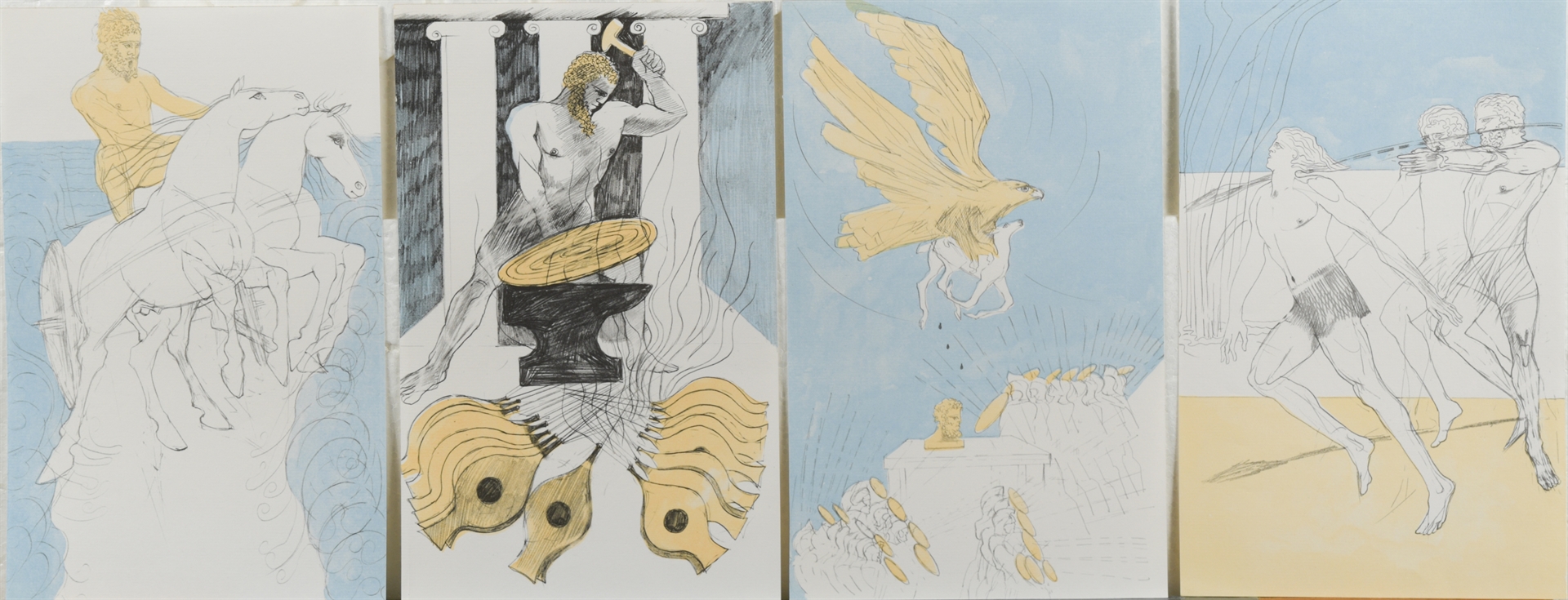

A 1985 retrospective was given to her at the RA of which she was an elected member.
.jpg)
In 1982, she was for her services to art created DBE. Paul's Cathedral and a Walking Madonna for Salisbury Cathedral. Her numerous public commissions include Wild Boar for Harlow New Town, Blind Beggar and Dog for Bethnal Green, a lectern for Coventry Cathedral, Shepherd for Paternoster Square beside St. During the Algerian war, she began making heads, blinded by goggles and which have a threatening facelessness. Often the anatomy is exaggerated or incorrect, the life-likeness grows more out of her interest in the spirit of the subject: the urgency animating Running Man, the alertness in Barking Dog. The appeal of her work lies in its directness, the expurgation of all artiness in a frank statement of feeling. Her main subjects were man, dog and horse. Since then exhibited regularly and was for twenty-seven years associated with the Waddington Gallery in London and Toronto, Canada. She studied at Guildford School of Art and Chelsea School of Art and first captured the public's attention in 1951 at an exhibition at the Beaux Arts Gallery, London.
.jpg)
Here, gazing upwards with soft wide eyes, Frink’s Dog does the same.Sculptor and printmaker born at Thurlow, Suffolk. This was inspired by a visit she made to Leonardo da Vinci’s final residence, Château de Cloux in Amboise, France, where the doors are guarded by large stone sitting dogs, which seem to still be waiting expectantly for their absent master. The piece is in fact closely related to another earlier series, Leonardo’s Dog, sculpted by Frink in 1990. The piece has a physical sense of weightiness, as the hound sits on hind legs, resting firmly on its over-large paws its owners reliable companion. The essence of touch was essential to Frink, who explained, ‘reality is the way something feels rather than how it looks’. With the artist utilising the textured surface of the bronze to give the work a heightened tactility. The sculpture has an elegant simplicity, as Frink subtly captures the essence of the archetypal loyal dog. Her sympathetic rendering of the dog shows her affection for the subject, yet refrains from being over-sentimental.
.jpg)
Frink carefully observed the behaviour of these hounds, and their expressive potential.ĭog is naturalistic, yet not over-stylised, with Frink focusing on the character and essence of a dog rather than anatomical accuracy. With their rich colour and elegant musculature, these animals were ideal for translation into bronze. There her husband, Alex Csáky kept Hungarian gun dogs named Vizslas, golden-red athletic dogs, which undoubtedly provided inspiration for her works. In the final decade of her career, it was dogs that held a particularly important place in Frink’s practice, reflecting perhaps her own life surrounded by animals at Woolland house, nestled in the countryside of Dorset. Ratuszniak, Elisabeth Frink, Catalogue Raisonné of Sculpture 1947-93, Farnham, 2013, p. Over her career, she produced numerous renderings of both horses and dogs, animals which fascinated her ‘because they’ve been man’s best friend for thousands of years’, and Frink began to explore in depth the nature of an inter-specie relationship which has been depicted in art for centuries (E. She was particularly concerned with the close relationship and interdependence between humans and domestic animals, and having grown up in the rural Suffolk, had seen firsthand this close bond. Throughout her practice, Frink was preoccupied by the relationship between humanity and nature, and animals were a subject to which she returned frequently. The present work was commissioned by The Morris Singer Foundry, Basingstoke, to be sold in aid of Great Ormond Street Hospital for Children, London.


 0 kommentar(er)
0 kommentar(er)
